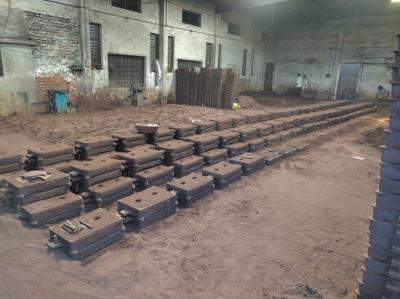
Disposal of waste foundry sand (WFS) remains one of the major challenges faced by the foundry industry today. India’s annual casting production is around 9.3 million tons which is the third highest in the world.WFS contains toxic heavy metals and particulate matter which makes dumping of waste sand an environmental and health hazard. More than 80% of Indian foundries (i.e. more than 3600) are medium and small scale foundries which cannot afford costs associated with the dumping and treatment of waste foundry sand. Stringent regulations of the Pollution Control Board and the Government regarding waste disposal and sand mining have brought many of these small scale foundries on the verge of closure. A lot of research has been done to use WFS in other industries like construction and ceramics, but not much has been done to reclaim and use the waste sand within the foundry itself. Some large scale solutions are available in the market but none of these are suitable or economical for small and medium scale foundries which generally require a reclamation capacity as low as 100 kg/hour. Use of reclaimed sand within the foundry
would improve the economics and efficiency of the process and reduce the environmental impact. Our team conducted a survey of more than 120 foundries in the
Kolhapur foundry cluster and identified the need to reclaim waste foundry sand. During the survey, it has also been found that almost 70 small foundries have shut down in the Kolhapur region due to losses over the past 2 years. WFS contains toxic heavy metals and particulate matter which makes dumping of waste sand an environmental and health hazard. More than 80% of Indian foundries (i.e. more than 3600) are medium and small scale foundries which cannot afford costs associated with the dumping and treatment of waste foundry sand. Stringent regulations of the Pollution Control Board and the Government regarding waste disposal and sand mining have brought many of these small scale foundries on the verge of closure. A lot of research has been done to So far, two prototypes have been designed - vertical and horizontal fluidised beds - based on the principles of mechanical attrition and impact, and to remove dead binder from waste sand. The biggest challenge is to optimise the operating conditions and to bring down the reclamation cost to less than that of fresh sand. The product containing less than 2% clay is acceptable to use for making moulds in small foundries. The project team has been successful in reducing the clay content to 3%, but the efforts are on to reduce the clay content to less than 2% and to bring down the reclamation cost.
Prof. G N Jadhav
